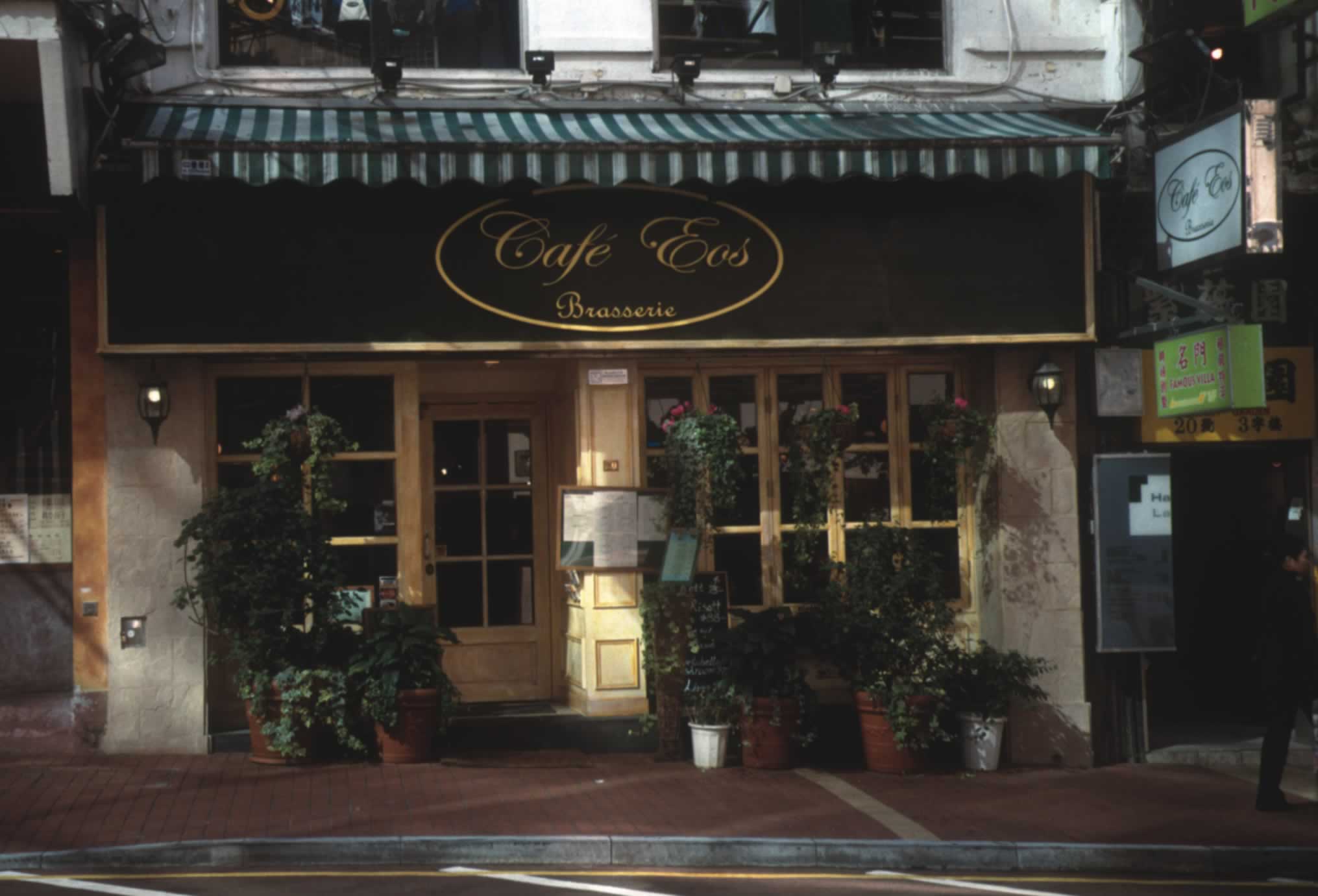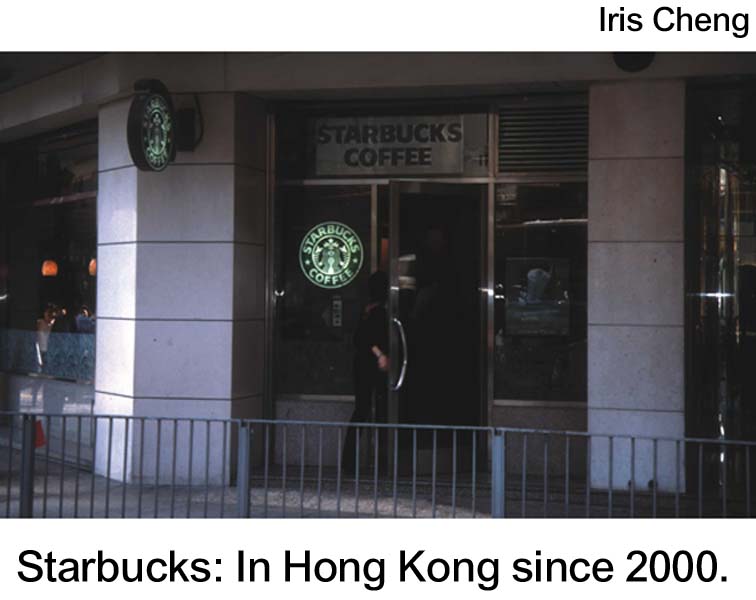![]()
The real taste of coffee
Bitterness for Third World
coffe growers
Soft yellow light, clean beige sofas and the smell of
cappuccino, are what 23-year-old Eric Leung expects whenever he enters
the Starbucks coffee shop in Causeway Bay.
Mr. Leung is a university student living in Sha Tin. He likes Starbucks
and goes there almost every week.
Alvin Wong, a 30-year-old marketing officer from Causeway Bay, also enjoys
Starbucks. “Going to coffee shops is a trend,” he said. “More
people go to Starbucks, and more Starbucks coffee shops are opening.”
However, it seems that the trendy coffee drinkers do not really know
how coffee can be a bitter business, especially for Third World coffee
farmers.
According to Phoenix Leung, campaign officer at Oxfam Hong Kong, the coffee
market is unfair to farmers.
Oxfam said that big companies are exploiting farmers in coffee growing
countries such as Brazil, Vietnam, Tanzania and Ethiopia.
The four leading coffee roasting companies in the world are P&G, Sara
Lee, Nestle and Kraft.
Because they buy coffee in large quantities, they have strong bargaining
power. They use this power and marketing strategy to set desirable prices
and make profits. Ninety-four percent of the profits go to them.
As an example, the retail price of coffee is about US$10 a pound, while
most coffee farmers earn less than 50 U.S. cents a pound.
Miss Leung said, “Their income cannot even cover their production
costs. They cannot support their livelihood.”
As the prices decrease, coffee farmers have to grow more coffee to get
the same income. A cycle of increasing production and decreasing prices
is thus created. However, the price of coffee in the shops and supermarkets
does not drop.
Farmers are small producers with low bargaining power. It is difficult
for them to bargain collectively. The relationship between farmers and
buyers is thus unbalanced.
Even though there are many coffee shops in Hong Kong, there is very little
awareness of this problem.
Janet Miu is a 40-year-old housewife from Happy Valley. Like most of Starbucks’
customers, she said that she has never heard about this issue.
Regarding Starbucks and fair trade, Prof. Catherine Chiu of the Department
of Applied Social Studies at the City University of Hong Kong said that
Global Exchange, a non-profit organization in the U.S., successfully asked
Starbucks to participate in their Fair Trade movement in 2000.
According to Global Exchange, Starbucks began to sell Fair Trade certified
coffee in its stores in the U.S. in October 2000.
Importers must meet criteria to have their products certified as fairly
traded. One of the requirements is a minimum price of US$1.26 a pound
paid directly to the farmers and not to a middleman. This guarantees the
farmers have an income that meets their basic needs.
Global Exchange did so by circulating an open letter to students, environmental
groups, churches and social organizations asking Starbucks to support
the Fair Trade movement. In addition, many people sent letters to Starbucks
from the Global Exchange website.
The organization regarded it as a huge victory for farmers.
Starbucks is not selling Fair Trade certified coffee in Hong Kong, but
it is considering doing so, according to Oxfam’s Miss Leung. Starbucks
declined to be interviewed on the matter, saying that they had no time.
Prof. Chiu is concerned about the decision of Starbucks not to sell its
Fair Trade certified coffee in Hong Kong.
She said that the problem is about the low social commitment and lack
of global awareness of Hong Kong people.
First Cup Coffee is a small coffee shop that opened 5 years ago in Tsim
Sha Tsui. It offers Fair Trade certified coffee.
The owner of First Cup Coffee, Tom Mideley, said that only a few customers
know about it and buy it.
After hearing about the unfair coffee trade, Miss Miu said, “To
be frank, this issue sounds distant to me.”
Mr. Leung feels the same way.
Sipping a cup of mocha and enjoying a piece of cheesecake, he smiled after
hearing about it.
“Nothing is fair. Coffee trade is just another business.
“I do not want to think about such a serious issue. I come here
to relax,” said he, laughing.
.![]()

Grande Mocha Cappuccino
Starbucks - new
way of drinking coffee
By Iris Cheng
The reasons behind the success of Starbucks are numerous.
Starbucks was founded in 1971.
The total number of branches worldwide increased dramatically from 165 in
1992 to 5,688 today. Starbucks has also expanded rapidly in Hong Kong since
its arrival in 2000.
People like Starbucks for different reasons. 
Eric Leung, a 23-year-old university student from Sha Tin, said, “I
like the atmosphere here. It is quiet and relaxing.”
Tom Mideley, owner of First Cup Coffee in Tsim Sha Tsui, said, “I
think most people go to Starbucks for the environment.”
Alvin Wong, a 30-year-old marketing officer from Causeway Bay, goes to
Starbucks for another reason. He said he likes the Starbucks coffee because
of its constant quality.
Prof. Catherine Chiu of the Department of Applied Social Studies at the
City University of Hong Kong said the trend of going to coffee shops is
associated with the economic downturn and consumer psychology.
She said that in a bad economy, people want to pay less and get more.
“Coffee shops like Starbucks are decent places. People can stay
and talk for hours even if they only buy a single cup of coffee,”
said she.
“It is a relatively cheap way to enjoy a superior lifestyle. People
conceive going to coffee shops as trendy and professional.”
The marketing strategy of Starbucks also accounts for its expansion. Mr.
Mideley regards the strategy as a threat to small, independent coffee
shops.
He said, “Starbucks opens many outlets in small areas. The market
share of each coffee shop becomes very small.
“However, small independent coffee shops cannot survive in such
a divided market. They eventually close.”
Prof. Chiu has a different opinion. She said it is easy to understand
complaints from small coffee shop owners because of their competition
with Starbucks.
There are 5,900 Starbucks outlets in more than 20 countries. Prof. Chiu
is sure that Starbucks has a well-planned marketing strategy in building
its multinational brand.
“It is not about ethics. It is about business.”
The business model of companies like Starbucks may contribute to globalization.
According to Prof. Chiu, transnational corporations like Starbucks invest
huge resources in marketing plans.
Via social engineering, they are developing cultural values such as the
feeling of superiority to patronize Starbucks.
Small companies can hardly compete with them.
Mr. Mideley agreed. “It is obviously a sign of globalisation. Starbucks
coffee is everywhere,” said he.
But he disapproved of this kind of globalization.
“Though the rise of big coffee companies helps create awareness
of the drink, they kill small coffee shops, and consumers have fewer choices.
Small things should survive.”![]()